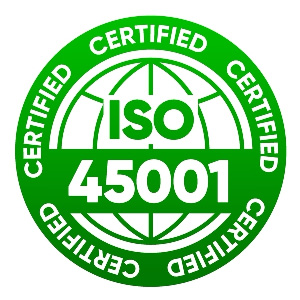Abrasive Wheels - Blended Learning / Învățare Combinată
Preț:50 EURO
Disponibil ca webinar:DA, partea practică trebuie finalizată separat
Acest curs este complet aprobat de Ireland TT Ltd, CPD și IIRSM.
Acest curs oferă o privire detaliată asupra pericolelor asociate roților abrazive, cum să le identificați și să le preveniți; responsabilitățile legale ale angajatorilor și angajaților; modul corect de depozitare și inspecție regulată a roților utilizate, precum și alegerea celor mai potrivite tipuri de roți pentru diverse sarcini.
Rezultate ale învățării
- Aflați despre diferitele tipuri de roți abrazive, utilizările lor și pericolele asociate.
- Înțelegeți cum să selectați roata abrazivă potrivită pentru fiecare lucrare.
- Familiarizați-vă cu PUWER 1998 și sistemul britanic de marcare și identificare a roților.
Structura cursului
Cursul este format din 4 secțiuni și un test. Toate secțiunile trebuie completate pentru a accesa testul final.
- Introducere
- Secțiunea 1: Roți abrazive – 13 minute
- Secțiunea 2: Tipuri de roți – 5 minute
- Secțiunea 3: Alegerea roții potrivite – 7 minute
- Secțiunea 4: Siguranța și întreținerea roților – 12 minute
- Test final – 5 minute
Detalierea secțiunilor
Secțiunea 1: Roți abrazive
Există mai multe tipuri de roți abrazive, fiecare fiind proiectată pentru utilizări specifice, precum tăierea, modelarea, îndepărtarea marginilor ascuțite sau curățarea materialelor.
Această secțiune acoperă:
- Pericolele asociate utilizării roților abrazive.
- Legile și reglementările aplicabile.
- Responsabilitățile angajatorilor și angajaților.
Secțiunea 2: Tipuri de roți
Această parte explică:
- Sistemul britanic de marcare și identificare a roților.
- Informații despre furnizor, dimensiuni, restricții de utilizare și viteze de operare.
Secțiunea 3: Alegerea roții potrivite
Selecția corectă a roții abrazive este esențială. Alegerea greșită poate duce la deteriorarea materialului, o calitate scăzută a muncii sau accidente.
Aici veți învăța:
- Cele șase caracteristici principale ale roților abrazive necesare pentru a face selecția corectă.
Secțiunea 4: Siguranța și întreținerea roților
Această secțiune include:
- Cum să pregătiți și să montați corect o roată abrazivă.
- Testarea și montarea roților (inclusiv utilizarea flanșelor și protecțiilor).
- Întreținerea roților: truing, dressing, balansare.
- Manipularea și depozitarea corespunzătoare.
Durată totală: 42 minute
Preț: 50 EURO
Disponibil ca webinar: DA (partea practică trebuie completată separat)
Certificări: Aprobat de Ireland TT Ltd, CPD, IIRSM
Curs de manipulare manuală
Curs de manipulare manuală în județele: Cork, Dublin în Română și alte limbi, rezervare online
CPC-ul conducătorului auto - Instruire periodică
CPC-ul conducătorului auto - Instruire periodică in Dublin, rezervare online
 RO
RO
 EN
EN
 PL
PL
 PT
PT






